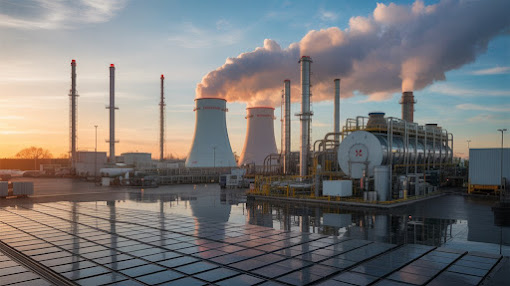Climate Impact on Extreme Rainfall | #climatechange #extremeweather #climatescience #climatemodeling
🌍 Studying Extreme Rainfall in a Warmer World: A Pseudo Global Warming-Based Approach
Understanding how climate change affects high-impact rainfall events is a critical challenge for climate scientists, meteorologists, and technical experts worldwide. ⛈️📈 The increasing frequency and intensity of such events pose real risks—from urban flooding to devastating landslides. However, using traditional global climate models (GCMs) to assess these changes is often insufficient due to their limited spatial resolution and the vast computational resources needed for long simulations.
To bridge this gap, a novel Pseudo Global Warming (PGW)-based system has been developed. This innovative system allows researchers and technicians to explore the spatiotemporal behavior of extreme convective rainfall and associated weather phenomena like hail, wind gusts, and lightning—all within a robust and climate-relevant framework. ⚡🌧️💨
🔍 Why PGW Instead of Traditional GCMs?
Conventional global climate models are useful for broad-scale projections, but when it comes to extreme rainfall events, particularly convective systems, their resolution (often 50–100 km) is far too coarse. Convective storms develop on scales of just a few kilometers, making them nearly invisible to GCMs. 🛰️🌐
Additionally, GCMs require long simulation periods (decades to centuries) to statistically represent rare events. Achieving both high spatial resolution and long-term simulation simultaneously is computationally expensive and often unfeasible.
Enter PGW, a more targeted and efficient approach:
✅ High-resolution short-term simulations
✅ Focused on actual events
✅ Adapted to different climate states (past, present, future)
🛠️ How the PGW-Based System Works
The system revolves around daily short-term (3-day) forecast cycles, each beginning at midnight. These are run using 12 km resolution models for five distinct climate conditions:
-
Present-day 🌤️
-
A cooler past climate 🧊
-
Three progressively warmer future climates 🌡️🔥🔥
When an extreme rainfall event is identified, the system downscales these simulations further to convection-permitting scales (e.g., 2–4 km). This enables a much more accurate representation of convective activity, allowing researchers to capture the intensity, structure, and localization of severe storms and related phenomena. 🌩️📊
📚 Real-World Case Studies: What We've Learned
To demonstrate its effectiveness, the PGW-based system was applied to several recent extreme weather events:
-
Storm Babet (UK, October 2023) 🇬🇧
-
Spring Floods (Italy, 2023) 🇮🇹
-
Bavarian Floods (Germany, 2024) 🇩🇪
These events were chosen for their severity, diversity in geography, and climate sensitivity. Results revealed striking insights:
-
🌡️ Rainfall intensities exceeded the expected increase based on Clausius-Clapeyron scaling (which predicts ~7% increase in moisture per °C of warming).
-
🌀 Stronger and more localized convective systems were observed in future-climate simulations.
-
🌊 Flash flood risk increases significantly due to tighter spatial rainfall concentration in warmer scenarios.
-
💨 An additional case with intense convective wind gusts highlights potential for expanding the system to other extremes like derechos and tornadoes.
⚖️ Strengths and Limitations
Strengths:
✅ High-resolution modeling of real-world events
✅ Efficient use of computing power
✅ Multi-climate scenario comparison
✅ Captures rare but high-impact extremes
Limitations:
⚠️ Still not a substitute for long-term probabilistic studies
⚠️ Cannot account for internal climate variability over decades
⚠️ Limited in geographic scope unless events are chosen widely
Despite these, the PGW system is a valuable complement to traditional climate tools, offering event-specific insights that were previously out of reach.
🧪 Takeaway for Researchers and Technicians
For those in the field of climate dynamics, hydrology, and meteorological modeling, the PGW system offers a practical and high-resolution window into the future of extreme weather. 📡📍 By focusing on actual storm events and re-simulating them under different climate scenarios, we can directly observe how a warmer world reshapes rainfall patterns, intensities, and impacts.
This is particularly crucial for designing future-proof infrastructure, improving early warning systems, and guiding climate adaptation policy. 🏙️🚨
🌐 Final Thoughts
As the atmosphere continues to warm, the need for actionable climate intelligence becomes more urgent. Tools like the PGW-based system empower us to go beyond theoretical projections and engage directly with the physical realities of a changing climate—one storm at a time. 🌦️🧠🔍




Comments
Post a Comment